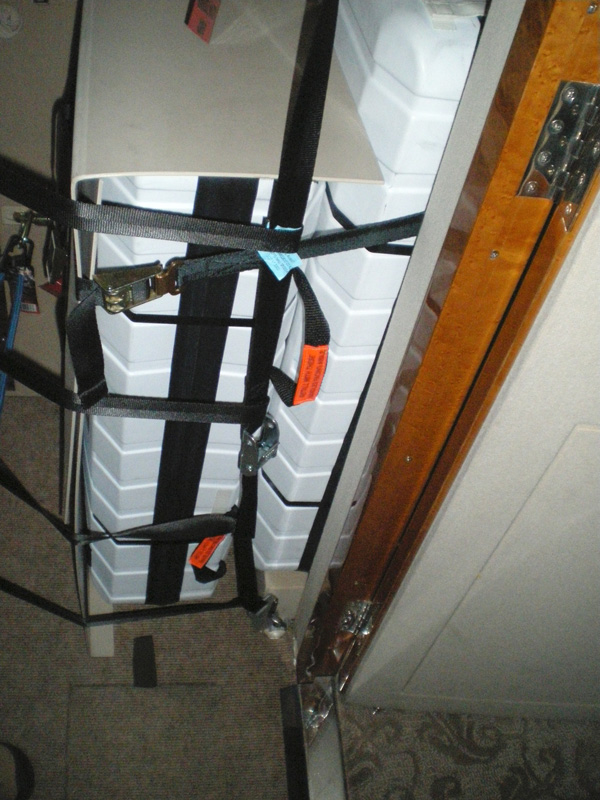Liferafts
Similar to PFDs, CFR 135.167 (Emergency equipment) also includes the requirements for liferafts for extended overwater operations, along with the extra sets of required equipment contained within the liferafts. This includes any aviation operation, as discussed previously, greater than 50 miles from shore, just like PFDs. In CFR 91.509 (Survival equipment for overwater operations) the rules requiring liferafts extends the regime to 100 nautical miles from shore or alternatively, a total of 30 minutes flight time from shore. In Part 135 Operations, at least one liferaft needs to include an operable Emergency Locator Transmitter.
Within the liferaft standard TSO-C70a (Liferafts Reversible and Nonreversible), the number of people an aviation liferaft will safely carry comes from a combination of terms called rated capacity and overload capacity. Within the TSO, the rated capacity for a liferaft derives from a calculation of minimum square area per occupant, a total area of 3.6 square feet per passenger, while simultaneously measuring a liferaft’s freeboard at 6 inches above the water. The overload capacity comes from a smaller square footage allowance, at 2.4 square feet, simultaneously measured with any measurable freeboard above the water. An easy way to remember the relationship between rated and overload capacity in a liferaft comes from multiplying the rated liferaft capacity by 1.5. For instance, a 14-person liferaft has an overload capacity of 21 people.
Liferaft specific requirements for carriage overwater are also covered under the Air-worthiness for transport aircraft section CFR 25.1415 - of the regulations for aircraft that are certified for ditching under CFR 25.801. The regulations for the extended overwater regime require two separate Type I liferafts onboard. Type I means designed for use in passenger transport aircraft. Alternatively, Type II liferafts are designed for non-transport (cargo) aircraft. In both cases, such that after losing the largest liferaft there is enough space in the remaining liferaft(s) for all possible seats aboard the aircraft (not just the passengers on the flight).
For instance, if an aircraft has a 15-person seating capacity and 3 crew seats, then two 12-person liferafts would be acceptable. If one is destroyed or inaccessible, the deployed 12-person liferaft will accommodate 18 people (12 + 6 overload). Generally, the largest corporate aircraft liferaft carried will be a 14/21, which will accommodate 18 passengers and 3 crew. Unless excess liferafts of enough capacity are provided, the buoyancy and seating capacity beyond the rated capacity of the liferafts must accommodate all occupants of the airplane in the event of a loss of one liferaft of the largest rated capacity.
Liferafts & FAA Requirements
Aircraft Certified For Ditching (TSO-C70a, Liferafts, Type I)
- Capacity and overload capacity
- Type I certified required
- Minimum of 2 liferafts - FAA anticipates the possible loss of one liferaft.
- FAR 25.1411 General (d) Liferafts
- FAR 25.1415 Ditching Equipment (b)(1)
- Remaining liferaft(s) must be large enough to accommodate everyone - the maximum that can fly on your aircraft…not just this flight
- Plus one approved ELT on one of the liferafts.
- Survival equipment attached to each liferaft.
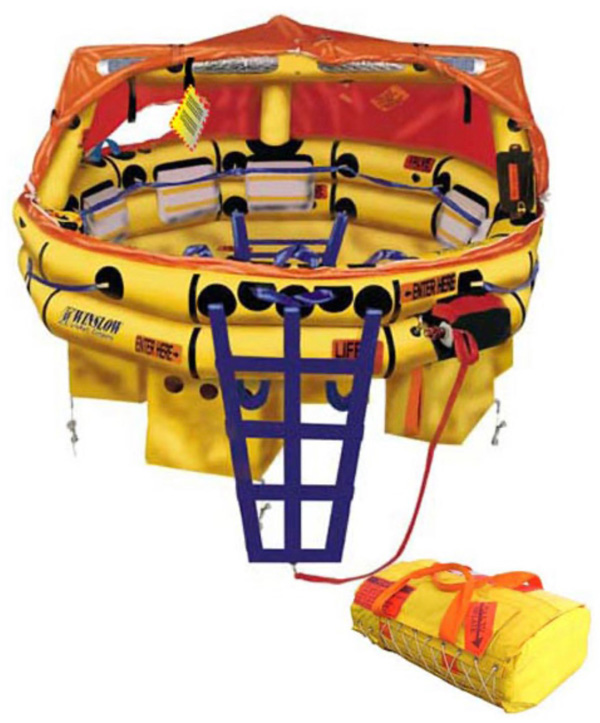
Type I - Winslow
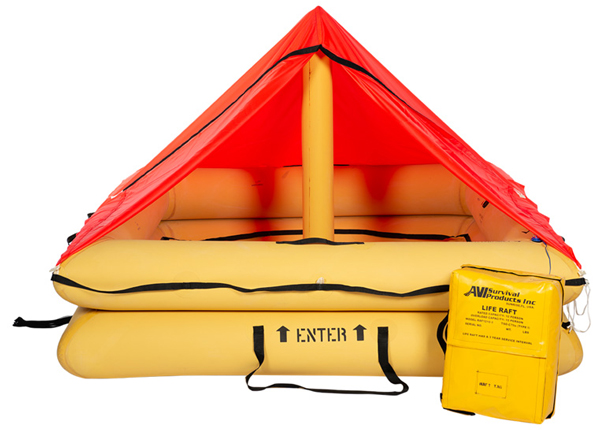
Type 1 - Survival Products

Type I - Eastern Aero Marine

EAM Type II
Location, Function and Operation of Additional Items of Emergency Equipment

Liferaft Information and Contents
Every certified liferaft will carry labels and inspection records which identify serial numbers, rated capacities of the equipment, weight, inspection schedules and expiration dates for those certification inspections. Also note that the yellow valise pack indicates that a 406 MHZ ELT is installed. Although sometimes marked differently, the example tag shown below comes from a Type I, 14-person Winslow liferaft. Also note the due date for the next inspection in the yellow circle labeled “next service due date.” The folded FAA 8130-3 Authorized Release Certificate, Airworthiness Approval Tag from the pocket shows the detailed inspection and verification for all of the equipment contained within the packed survival kit or, in some cases, the kit attached to the liferaft.
NOTE: If the liferaft does not have a copy of its contents attached, ask maintenance for a copy of the liferaft’s Form 8130-3, which likely lists the liferaft’s survival equipment.
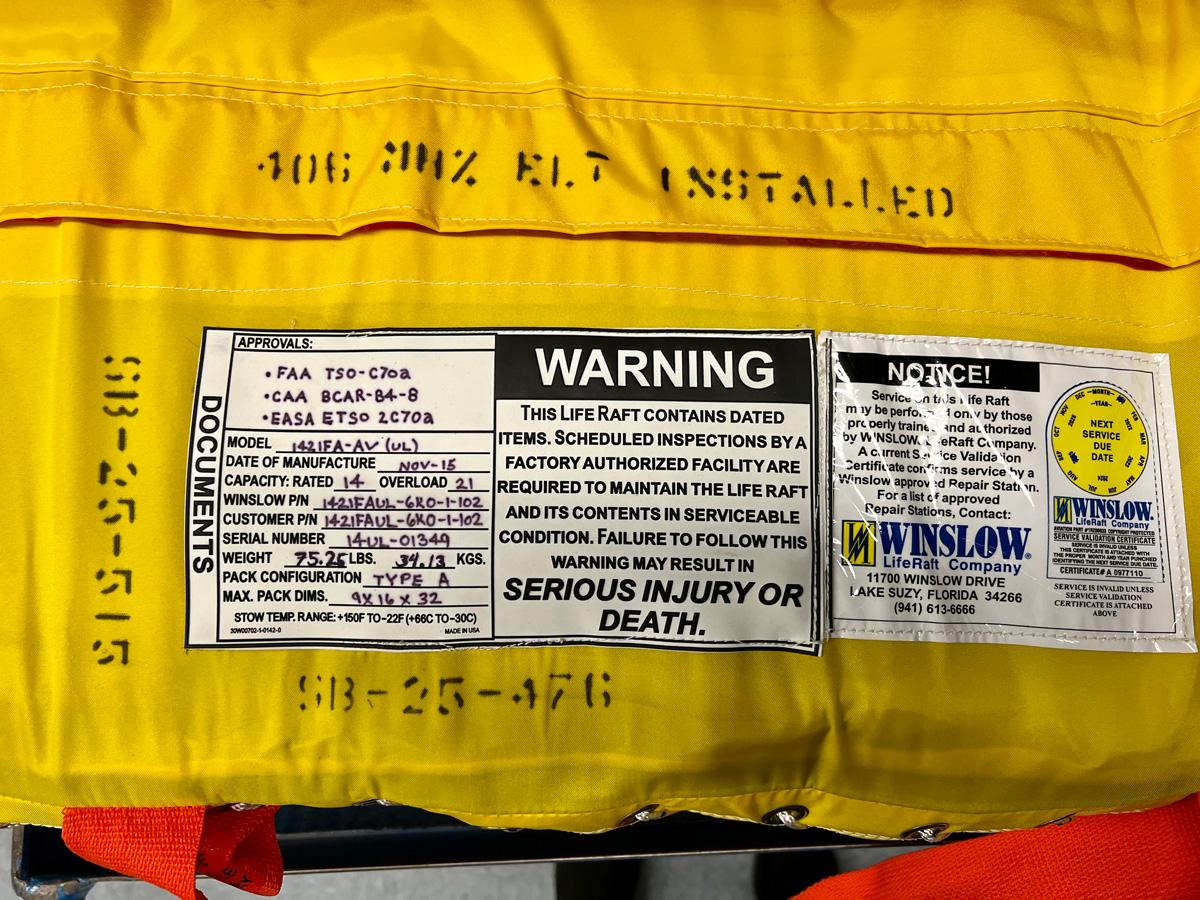
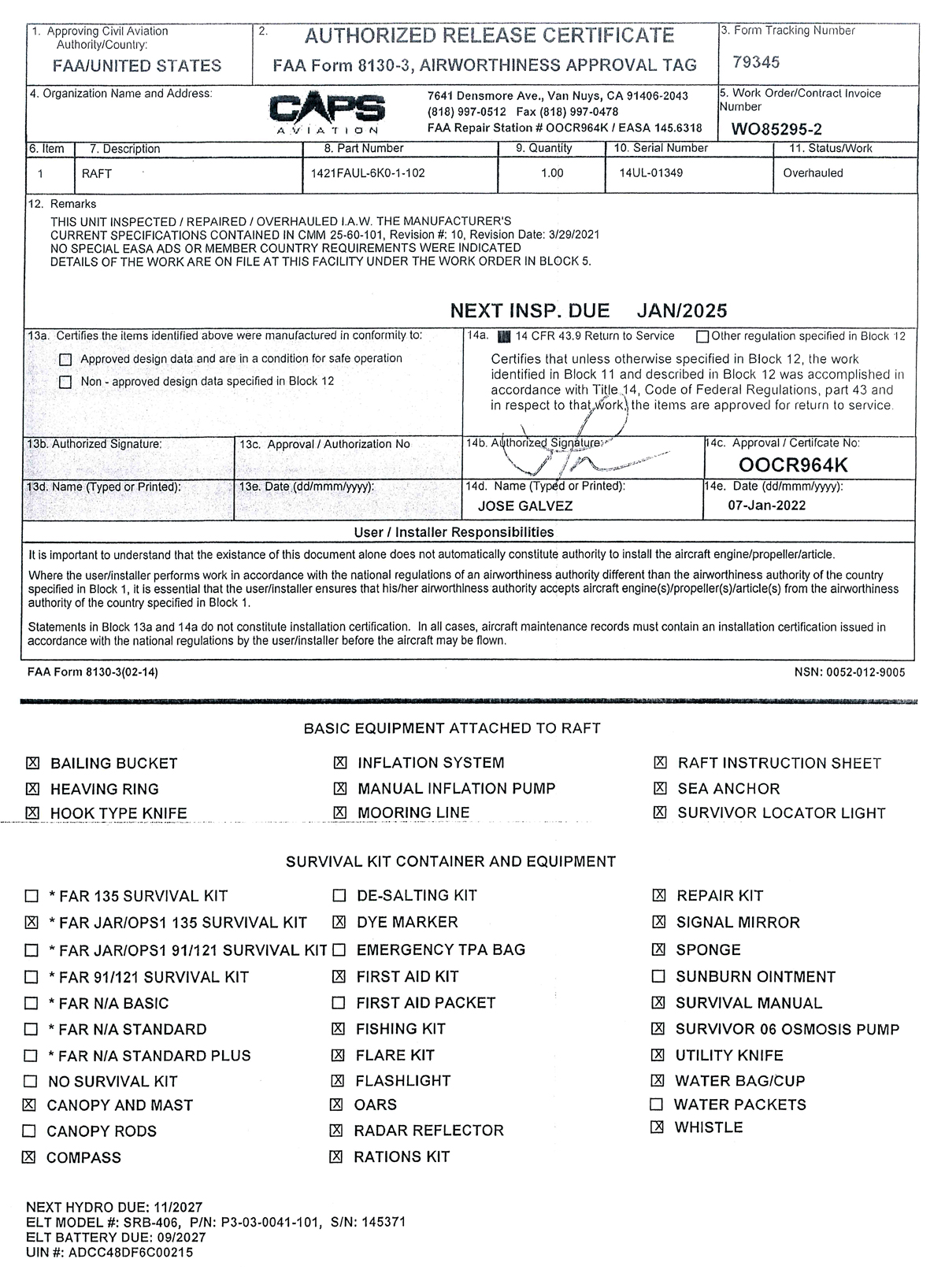
Liferaft Anatomy and Survival Gear
Securing a Liferaft to a Hardpoint Inside the Aircraft

On the outside of most aviation liferafts, you will find a lanyard, also called a mooring line, static-line, or painter. In an emergency, these lines secure the liferaft to the inside of the aircraft. Once a liferaft is inflated outside the aircraft, it prevents it from floating away, while also providing an anchor to pull against for the auto-inflation process.
In this image, courtesy of Bizjetsep, the manufacturer placed a metal clip at the end of the line to facilitate attaching it to a hard point within the aircraft cabin. This hard point fastener allows for the automatic inflation of the liferaft when the lanyard plays out, usually at 35 feet. Part of the technical specification for most corporate aviation certified liferafts requires that such a lanyard breaks or comes free at or below 500 lbs. of pull force. This prevents a deployed liferaft from sinking with the aircraft if the crew forgets or is unable to disconnect the lanyard after boarding.
Always take special care to inspect how liferafts are secured in the cabin as part of the preflight inspection. Sometimes, to securely stow a liferaft, well intentioned maintenance personnel might create a situation leading to unfamiliar crewmembers having difficulty freeing the liferaft for use in an emergency.
